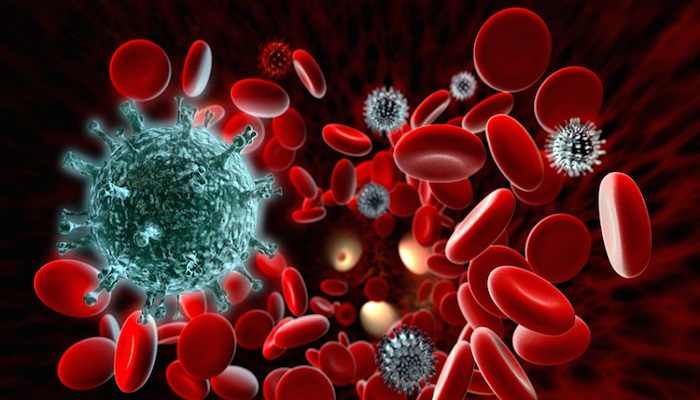Autoimmune hemolytic anemia is a disorder in which the person’s immune system generates auto-reactive antibodies that destroys the red blood cell of the person leading to lower level of blood cell in body. The life time of normal RBC reduces to just few days instead of normal 120 days. Sometimes when a person gets blood transfusion, the immune system develops antibodies angst these blood cells that can destroy its own blood cells. This condition is rare but can be fetal in some cases.
The destruction of blood cells can vary from rapid to slow. Sometimes, a viral attack in body may cause RBC destruction. The destruction may stop after sometime or it may get persistent and chronic. There are the main types of autoimmune hemolytic anemia:
- Warm antibody hemolytic anemia
In this case, the antibodies attack and destroy the RBC’s at normal body temperature of the patient.
- Cold antibody hemolytic anemia
It is also named as cold agglutination disease. The antibodies are this much reactive that they attack and destruct the red blood cells even at lower body temperate.
- Proximal cold hemoglobinuria (also called Donath Landsteiner syndrome) is most rare type of anemia. The person’s immune system gets auto-reactive upon exposure to certain body part to cold temerature. For example, washing hands with cold water will activate the antibodies here. This lead to destruction of RBC’s in that organ. It occurs usually in people who are already suffering from syphilis. The symptoms and severity varies.
Symptoms of autoimmune hemolytic anemia
Symptoms of AIHA vary in severity. And if the RBC’s destruction id gradual or slow, these symptoms may not appear earlier. When the destruction is rapid in body, these symptoms occur:
- Jaundice (yellowish skin and eyes)
- Fever
- Chest pain
- Heart failure
- Spleen and liver enlargement
- Swollen lymph nodes
- In case of persistent AIHA, it leads to death of patient.
- In cold AIHA, the person’s limbs get bluish and swollen
- Dark brown-colored urination
Causes of AIHA
The causes of this hemolytic anemia are not very clear. They can be genetic defects accompanied by environmental factors. Some most common causes of AIHA are lympho-proliferative disorders (chronic lymphatic anemia and systemic erythmatosus and lymphoma disorders) that occur due to mycoplasma infections and autoimmune disorders.
Molecular basis of disease
Drug induced AIHA occurs when a macromolecular drug α-methypoda binds to RBC surface and the immune cells recognize these RBCs as antigen. A complement system is activated leading to production of complement fragment such as C3a C4, C5, C9 etc. these fragments active granular leukocytes and form membrane bound complexes that are recognized as foreign particles or antigens. Macrophages and killer cells of immune system then destroy these RBC by phagocytosis.
Pathological mechanism
IgG and IgM classes of antibodies have association with extra-vascular AIHA. In case of IgG, complement activation is not so prominent, but IgG itself bind to Fc receptor of phagocytic cells that cause blood cells destruction through phagocytosis. This mainly occurs in spleen.
On the other hand, IgM is potent activator of complement system in case of intravascular AIHA. So in this case complement activation mediated RBCs lysis occurs. This type blood cells lysis or AIHA happens in kupffer cells.
Direct and indirect Coombs test or antiglobulin test is performed for diagnosis of AIHA. AIHA can be attributed as cold or warm type of AIHA. In cold AIHA, the antibodies acts best at lower temperature of 0-4 degree while in warm condition of AIHA, 37 degree temperature is optimal for antibodies.
Diagnosis tests
Blood test
Reticulocytes are immature red blood cells. Their number increase in blood when a person is suffering from AIHA. A blood smear examination is performed using microscope for this purpose. On the other hand, bilrubin concentration increases in blood. Bilrubin is a byproduct substance of RBC’s destruction in spleen. Similarly, another protein haptoglobin levels decrease than the normal range. In normal person, this protein binds with the hemoglobin molecule in red blood cells. Therefore, checking the amounts of these substances in blood test helps in diagnosis of AIHA.
Coombs/ antiglobulin tests
With this test warm type hemolytic anemia gives positive reaction with IgG antisera. Agglutination reaction, followed by the RBCs lysis, indicates occurrence of autoimmune hemolytic anemia.This test is also performed at the time of blood transfusion.
Treatment
The medications for the treatment of AIHA are:
- Corticosteroids
- Splenectomy
- Immunosuppressant medicines
Avoiding cold temperature in case of cold AIHA is best option. Corticosteroid medicines are the first choice as medicine. If the symptoms are too sever, the person’s spleen is removed surgically. This is termed as splenctomy. As the disorder is due to reactive immune system, one solution is to ‘suppress’ these auto reactive cells. Immune suppressant medicines such as cyclosporins serve this purpose. Consequently, the severity of symptoms reduces.
Conclusion
Autoimmune hemolytic anemia is a disorder of reactive immune cells. These symptoms vary from mild to severe. There is no treatment strategy for complete recovery yet there are medications to minimize the symptoms and severity.


It’s for very useful